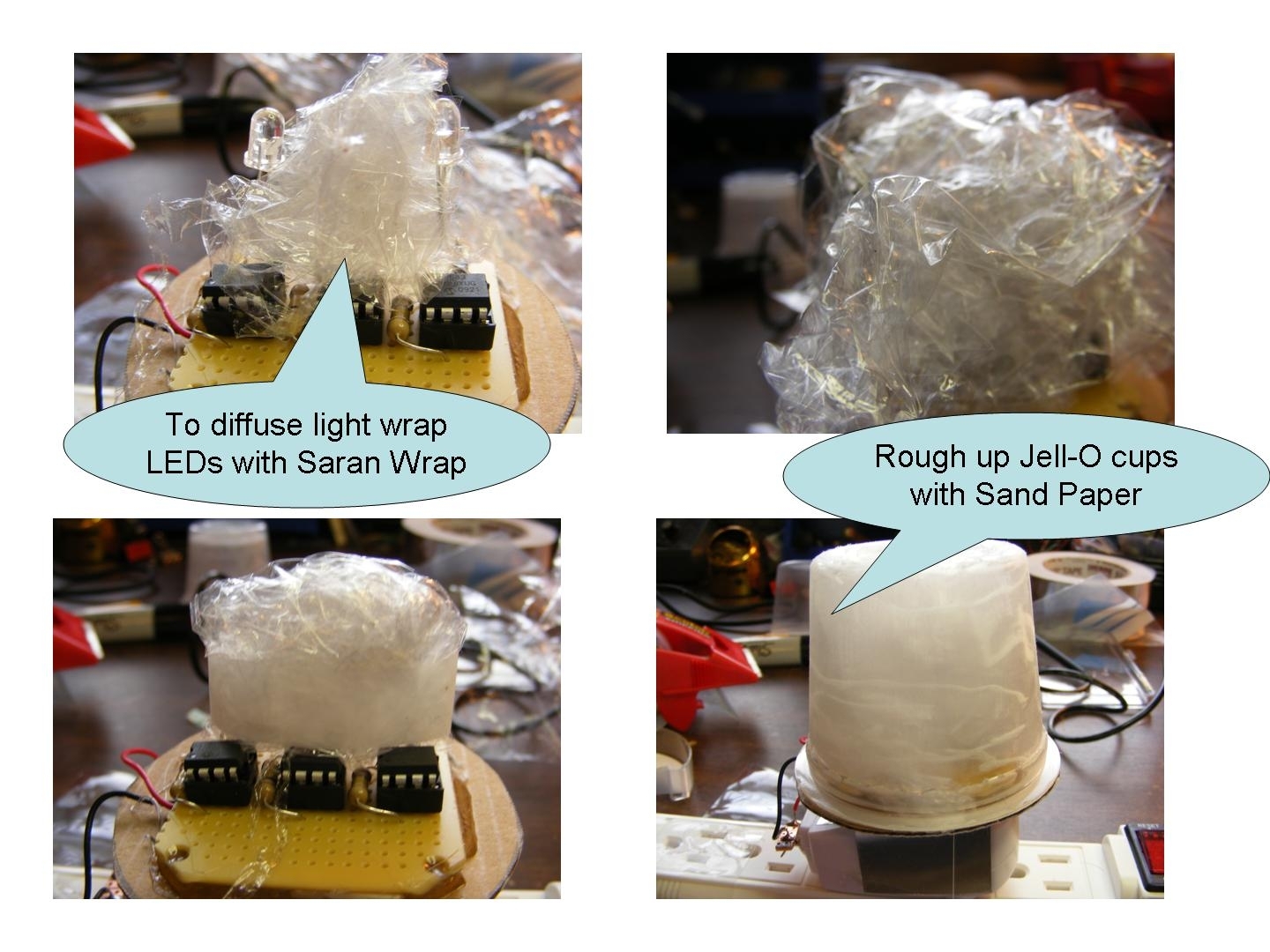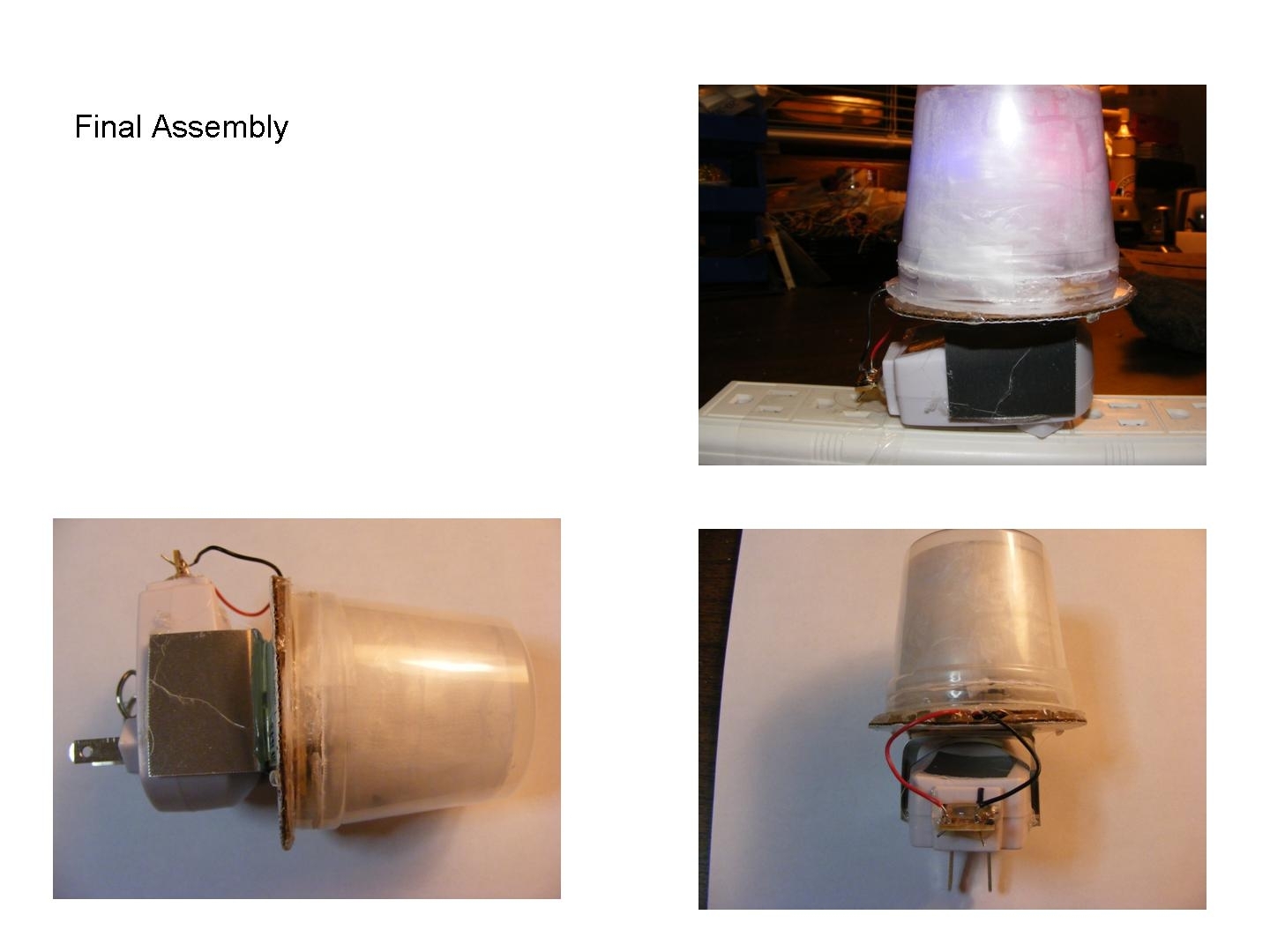For this variation on the original Trippy Nightlight an inexpensive (> $2.50) USB AC charger provides a traditional nightlight plug-in-the-wall form factor. To simplify the main circuit board I removed the download circuitry from the board and instead programmed the PICAXE 08M microcontroller
Total materials cost is about $15.00. The unit has been running problem-free for over six months. Electricity usage is almost too low to measure. Watch the YouTube video below to see the nightlight cycle through its color changes.
















